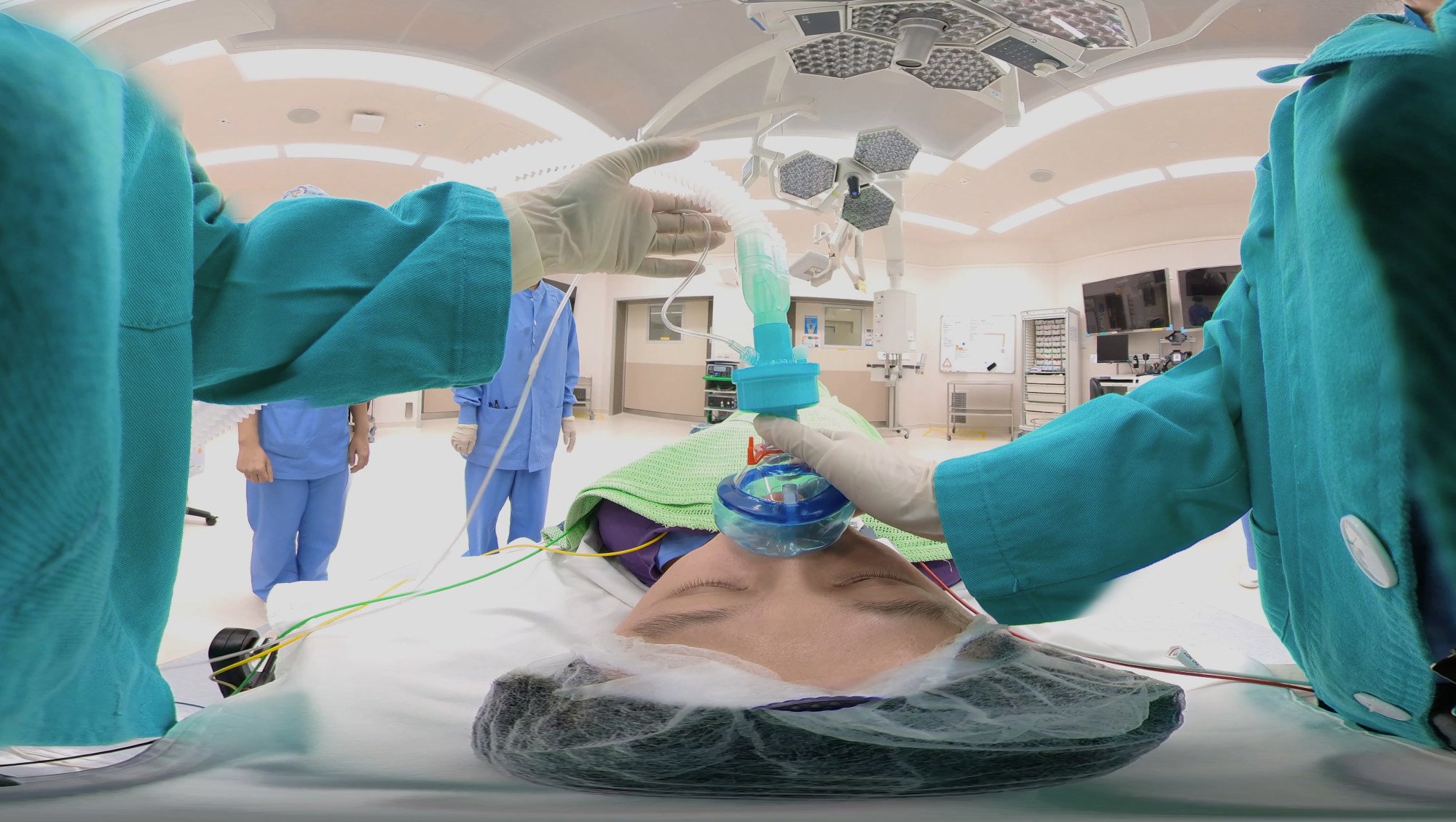Can virtual reality ease surgery fears in patients? A Hong Kong study may have the answer
[ad_1]
The researchers, from the Chinese University of Hong Kong (CUHK) and Singapore General Hospital, published their trial results in the peer-reviewed journal JAMA Network Open on October 31.
For the study, the team recruited 74 patients who were scheduled to undergo elective surgery under general anaesthesia for the first time.
“Patients might feel anxious to see staff with surgical gowns and hear sounds in the operating theatre for the first time. The exposure therapy served as a mental rehearsal so that patients felt more at ease before the actual procedure,” said Jojo Wong Cho-lee, an associate professor at the CUHK Nethersole School of Nursing, who supervised the study.
The participants aged between 18 and 69 received either standard pre-surgery care, or a 360-degree first-person immersive experience of the operating theatre and post-anaesthesia care unit. The tour lasted eight minutes.

“The results provide promising evidence that the VR-based intervention can effectively improve preoperative anxiety, stress, preparedness and pain in adult patients undergoing elective surgery,” the researchers wrote.
Lead author Chiu Pak-lung, a doctoral graduate at the CUHK nursing school, said patients often experienced anxiety before medical procedures such as vaccinations, providing blood samples, and surgery.
Preoperative anxiety can induce hypertension, raise heart rates and increase the risk of bleeding and post-operative complications such as nausea, vomiting, respiratory distress and heart attacks, according to the study.
Traditional methods of calming patients have included medication, music therapy, clown performances and leaflets that detail the surgery process and aftercare information, Chiu said, adding that VR-based techniques have been gaining in popularity.
To simulate the VR experience of a patient about to undergo surgery, Chiu played the role of a patient in a video which depicted the surgical process from the patient’s perspective, with medical staff asking him questions commonly used in the operating theatre.
Wong said the technology could have wide applications in medicine, such as training for healthcare professionals and as therapy for patients.
She said she was researching how VR could be used to engage users in an immersive environment while distracting them from medical procedures in real time.
“Children who get jabs and patients receiving chemotherapy often feel fear or will even refuse a needle or injectable treatments. But with a VR headset, they would not see those frightening cues near them and would instead experience relaxing content, distracting them from pain and discomfort,” Wong said.
While more clinical trials with larger samples are needed to further confirm its effects, the research team said they hoped their technology could be implemented in public hospitals in Hong Kong in the near future.
[ad_2]
Source link






